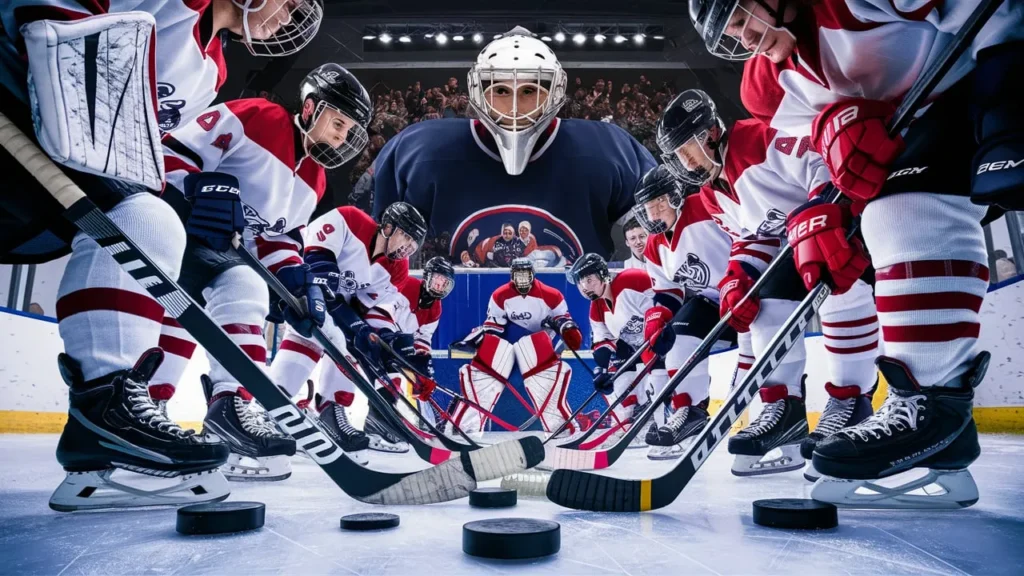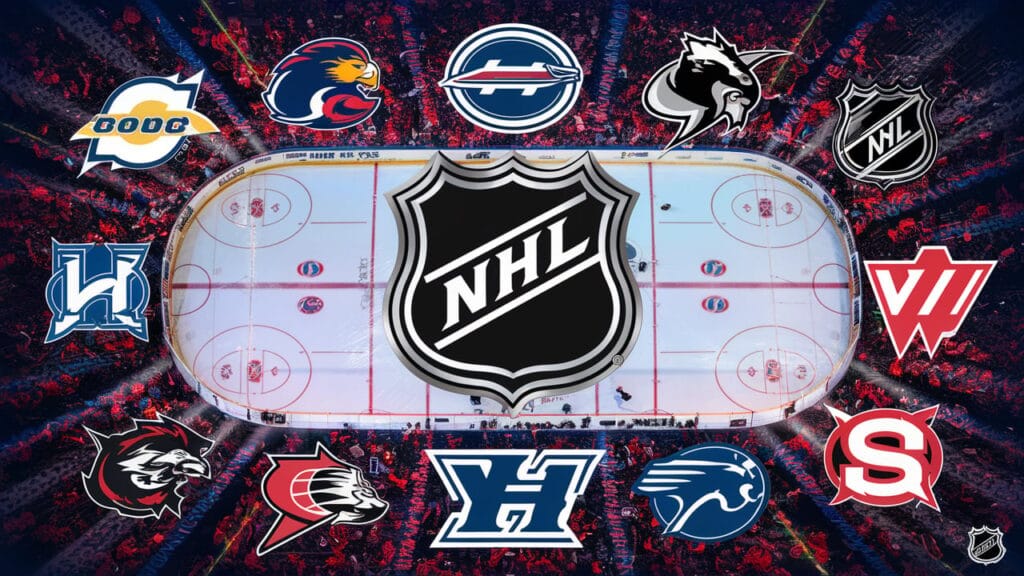Introduction: The Importance of Proper Hockey Gear for Beginners
Starting hockey can be a thrilling experience, but for new players, choosing the right equipment is essential. Without the proper gear, not only will your performance suffer, but you could also face unnecessary risks of injury. Essential hockey gear is a fast-paced and physically demanding sport, requiring the best protection and tools for safety and performance. Whether you’re just starting out in recreational hockey or planning to take your skills to the next level, having the right gear is crucial.
In fact, the global ice hockey equipment market is projected to reach USD 2.5 billion by 2025, with a steady compound annual growth rate (CAGR) of 2.4% from 2020 to 2025. This highlights the increasing popularity of the sport and, consequently, the need for quality gear that new players can rely on. In this guide, we’ll break down the essential hockey gear every new player needs, explaining the importance of each piece and offering tips on how to select the best products.
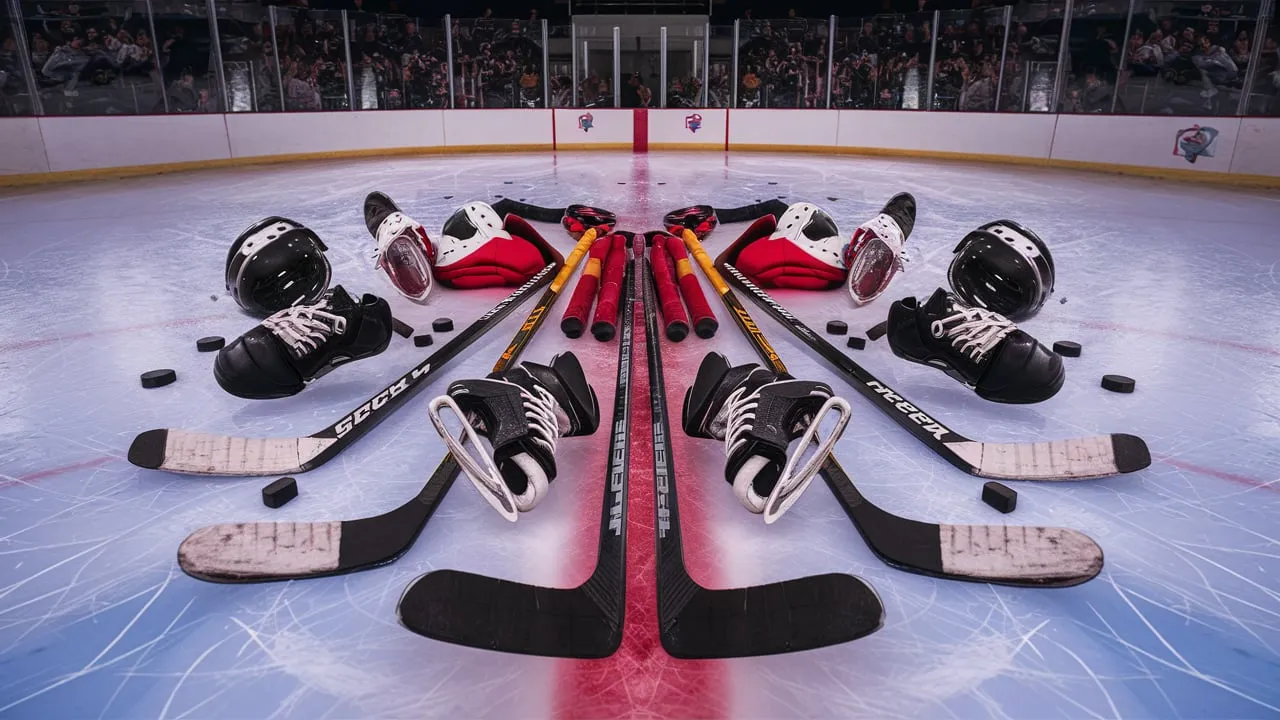
Hockey Skates: The Foundation of Your Game
Hockey skates are arguably the most critical piece of equipment for any player. They provide the necessary support, speed, and agility needed on the ice. For beginners, the right pair of skates ensures better stability and control while skating, which is vital as you learn the fundamentals of the sport.
Key Considerations When Choosing Skates:
- Fit: Skates should fit snugly but not too tight. A poor fit can lead to blisters, discomfort, or even affect your skating ability.
- Blade Length: Shorter blades offer more agility and quicker turns, while longer blades provide better stability and speed. Beginners should prioritize comfort and balance over extreme performance features.
- Brand and Price Range: Reputable brands like Bauer, CCM, and Warrior offer skates across different price ranges, from affordable entry-level options to high-performance models.
Recommendation: For beginners, look for skates with a good balance of support and comfort. Models like the Bauer Vapor X2.7 or CCM Ribcor 70K are excellent choices for new players.
Hockey Sticks: Finding Your Perfect Match
Choosing the right hockey stick is crucial for improving your shooting, passing, and puck-handling skills. Sticks come in various lengths, flex ratings, and blade patterns, each designed for different playing styles.
Types of Hockey Sticks:
- One-Piece Sticks: These are lightweight and provide a consistent flex, making them ideal for players focused on quick, powerful shots.
- Two-Piece Sticks: These offer more flexibility, making them a good choice for beginners who want a more forgiving feel when learning the game.
Key Factors to Consider:
- Flex Rating: A stick’s flex rating determines how much it will bend when shooting. A lower flex (e.g., 85 or 75) is better for beginners, offering easier shots with less force.
- Blade Curve: The curve of the blade affects puck control and shot accuracy. Beginners may find a mid-curve blade easier to handle, as it provides more control for passing and shooting.
Recommendation: A solid entry-level option like the CCM Ribcor Reckoner or Bauer Nexus 2N Pro offers great versatility for new players.
Protective Gear: Safety First
Hockey can be a dangerous sport, with the risk of collisions, falls, and high-speed puck impacts. Proper protective gear is non-negotiable for preventing injuries.
Key Pieces of Protective Gear for Beginners:
- Helmet: A properly fitted helmet is the first line of defense against head injuries. It’s crucial to choose a helmet that meets safety standards (such as CSA, HECC, or ASTM). Additionally, look for models with adjustable straps and cushioning for maximum comfort.
- Shoulder Pads: These provide protection for your upper body, including your shoulders, chest, and back. As a beginner, opt for shoulder pads with adjustable straps for a secure fit and ample padding for safety.
- Elbow Pads: Elbow pads protect the elbows from falls and collisions. Look for pads with a comfortable fit and adequate coverage to prevent injury in high-contact areas.
- Gloves: Hockey gloves offer protection for your hands and wrists. For beginners, lightweight gloves with ample wrist flexibility will help with stick handling and puck control while still offering protection.
- Shin Guards and Pants: Shin guards protect your lower legs, while hockey pants protect your hips, thighs, and tailbone. A good pair of pants should have a snug fit, offering comfort without restricting movement.
- Neck Guard and Mouth Guard: A neck guard helps prevent cuts from skate blades, while a mouthguard reduces the risk of dental injuries.
Recommendation: For new players, a complete gear set from brands like Bauer or CCM offers good quality and affordability, covering all necessary protective areas.
Hockey Jerseys and Socks: Comfort and Style
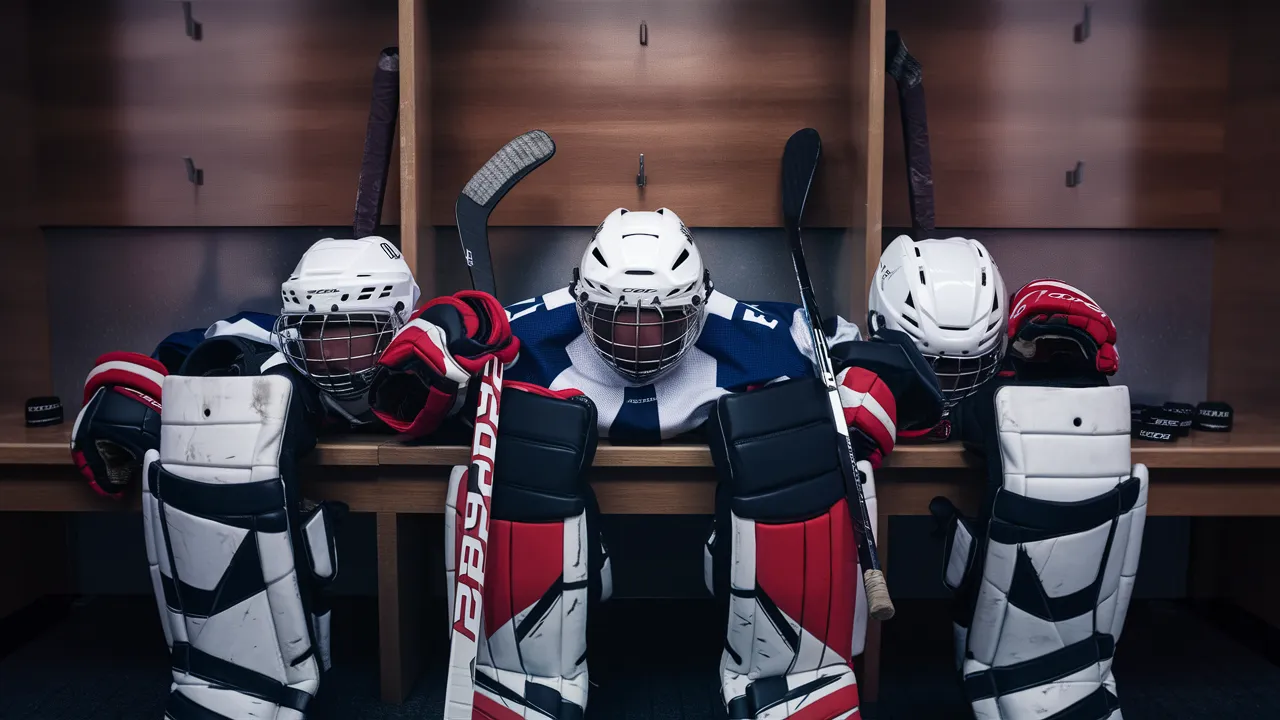
While they may not be as critical to your safety as protective gear, hockey jerseys and socks are essential for comfort and performance on the ice.
Why Jerseys and Socks Matter:
- Moisture-Wicking Fabric: Choose jerseys and socks made from moisture-wicking fabrics like polyester to keep you dry and comfortable during games.
- Proper Fit: Jerseys should allow for free movement of your arms and torso without being too loose or restrictive. Socks should cover your shin guards comfortably, staying in place throughout the game.
Recommendation: Look for performance socks from brands like Under Armour or Nike, which provide a snug, comfortable fit that helps prevent chafing during extended play.
Other Essential Hockey Equipment for Beginners
While skates, sticks, and protective gear form the foundation of hockey equipment, there are a few additional items you might need as you progress in the sport:
- Hockey Bag: A durable, spacious bag to store all your gear is essential. Look for one with multiple compartments to organize everything from skates to pads.
- Puck and Practice Gear: A practice puck is a great tool for improving your shooting and puck-handling skills at home. You can also consider buying training aids like rebounders or shooting targets to work on specific skills.
- Skate Sharpening Tools: Keeping your skates properly sharpened is essential for maintaining speed and control on the ice. Some players invest in portable skate sharpeners, but many rinks offer skate sharpening services for a small fee.
Understanding the Cost of Hockey Gear
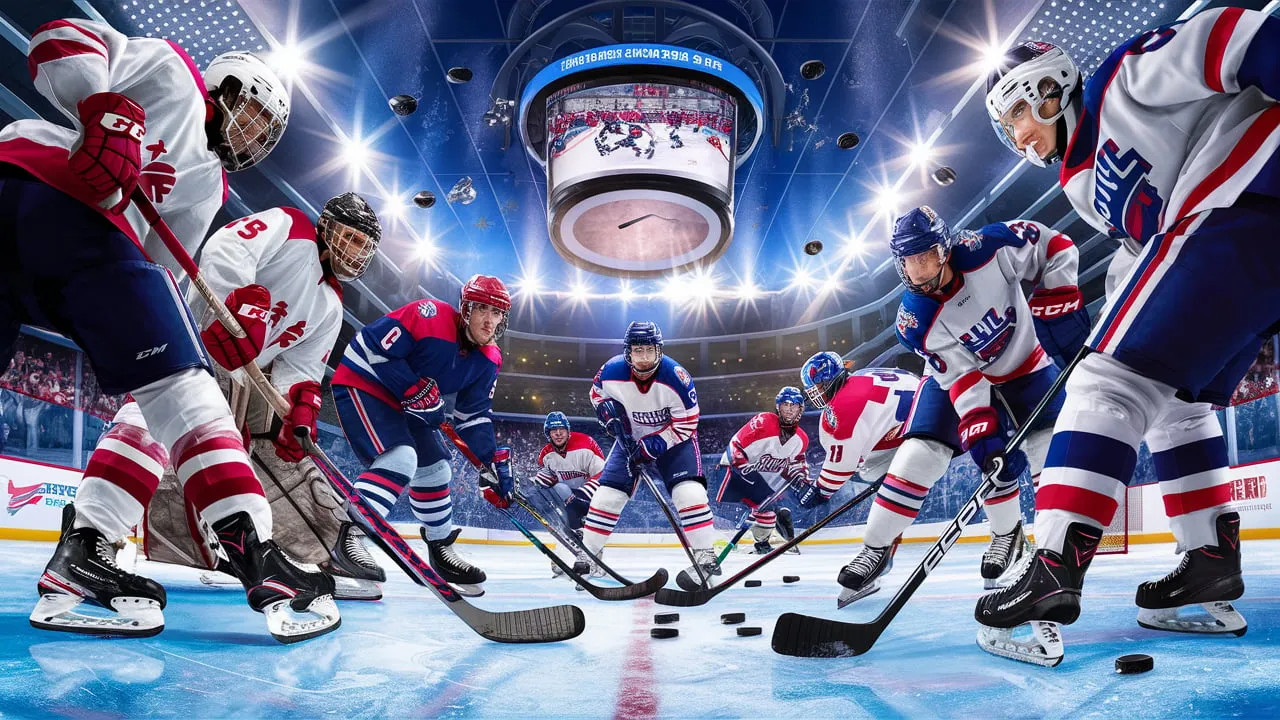
The cost of hockey gear can vary significantly based on brand, quality, and level of play. For beginners, it’s essential to balance quality with affordability.
Typical Price Range for Beginner Gear:
- Skates: Entry-level skates typically range from $50 to $150.
- Sticks: Beginner sticks can cost anywhere from $30 to $100.
- Protective Gear: A complete set of protective gear (helmet, shoulder pads, elbow pads, gloves, shin guards) generally costs between $200 and $500, depending on the brand and quality.
- Jersey and Socks: Jerseys usually range from $30 to $100, while socks are priced between $15 and $40.
As you progress in the sport and upgrade to higher-performance gear, the costs can increase. However, many brands offer mid-range options that provide excellent performance without breaking the bank.
Tips for Buying Hockey Gear on a Budget
For new players, hockey gear can seem expensive. However, there are ways to save without sacrificing quality.
Tips for Budget-Friendly Shopping:
- Look for Discounts: Many sporting goods stores offer sales and seasonal discounts, especially after major events like hockey season or Black Friday.
- Consider Second-Hand Gear: Check local classifieds or online marketplaces for gently used equipment. Many players upgrade their gear regularly, and you can often find lightly used items at a fraction of the price.
- Invest in Multi-Purpose Gear: Some gear, like hockey pants and gloves, can be used for multiple seasons if well-maintained, saving you money in the long run.
People Also Ask
Do I need to buy new hockey gear for my child?
While it’s tempting to buy new gear for a child, many stores offer used equipment in good condition, which can be a cost-effective option. It’s essential that the gear fits well, offers protection, and meets safety standards. If the child plans to continue playing, you may eventually want to invest in new gear as they grow and their skills improve.
How do I choose the right size hockey skates?
Hockey skates should fit snugly around your feet with minimal wiggle room in the heel, but not cause discomfort or pain. When you stand up, your toes should lightly touch the front of the skate. When you bend your knees, your toes should pull away slightly from the boot. Make sure your heel is securely in place, and the skate feels comfortable but not overly tight.
Are hockey sticks all the same?
No, hockey sticks vary in terms of material, flex rating, length, and blade curve. For beginners, it’s best to choose a stick with a low flex rating (75-85) for easier shooting. Mid-curve blades offer better puck control and are generally easier to handle. The length should come up to your chin when standing in skates, but this can vary slightly based on personal preference.
What should I look for when buying a hockey helmet?
When buying a hockey helmet, ensure it fits snugly, covers your forehead, and stays secure. It should meet safety standards (CSA, HECC, or ASTM). A full cage or visor provides facial protection, especially for beginners. Make sure it’s adjustable to grow with your child or to provide a comfortable fit for you.
Conclusion: Equip Yourself for Success
Choosing the right hockey gear is one of the most important steps in your journey as a new player. The right equipment not only helps you perform better on the ice but also ensures you stay safe and comfortable during your games. From skates to sticks, pads, and jerseys, each piece plays a vital role in your hockey experience.
By understanding the basics of hockey gear, considering your personal needs and budget, and choosing quality products that fit well, you can set yourself up for a successful start in the sport. Whether you’re practicing at the rink or competing in your first game, the right gear will help you play confidently and comfortably, allowing you to focus on improving your skills and enjoying the game.

